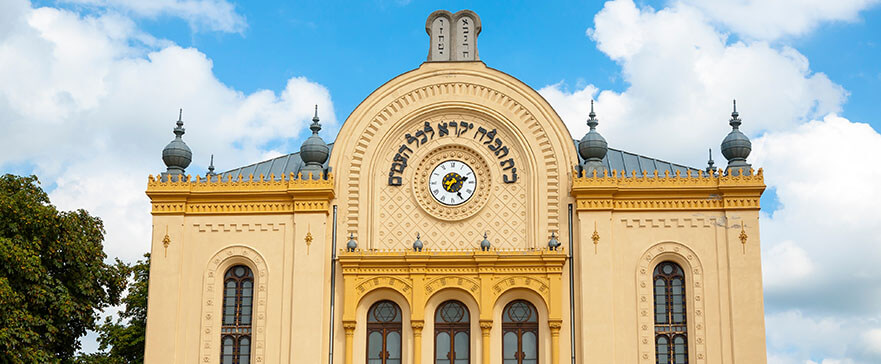King Josiah had a problem—several, actually. He was young, 20 to be exact, having become king at the age of 8. Things hadn’t gotten any easier after he took the throne. His father had been hopelessly corrupt and decidedly pagan and took the kingdom of Judah down a perilous path.
Josiah was quite the opposite of his father. Even as a young boy, he was an ardent follower of the God of Abraham, Isaac, and Jacob. Yet, pagan worship surrounded him and threatened the kingdom. He faced an enormous task.
Turning the People’s Hearts
As Josiah studied God’s Word, he became an important link in the conveyance of Holy Scripture. During his reign, many ancient scrolls were brought to light, codified, copied, and preserved—a costly endeavor at that time.
The young king’s heart was burdened. He had to bring back worship of the one true God to the kingdom. Josiah read the dire warnings of the ancient writings about straying from God and worshiping the gods of their neighbors. The northern kingdom of Israel had already been judged—how much longer before it was Judah’s turn?
Drastic reforms were needed. How drastic? That was one of those problems that King Josiah faced. How far could he push the people? He knew they needed to return to the Lord as a nation, but that meant tearing the people away from their high places and once again making them travel to Jerusalem to worship God.
Worshiping God Beyond Judah
Perhaps it was his young, flexible mind and his searching of Holy Scripture that gave him his answer. After all, God had revealed that He cannot actually be bound or contained in one building. Was it that big a stretch to then say that no one city can contain Him? Surely not. He can be worshiped anywhere at any time.
Thus, Josiah’s reforms included this idea, which revolutionized the religious life of the Jewish people. It freed them from having to take a long, arduous trek up to Jerusalem, save for times when the people needed to make sacrifices to God; that officially remained the purview of the Temple. While not so revolutionary as to include actual edifices where God could be worshiped, those would come in time. The principle behind the synagogue was established.
So, when did this idea become realized in the synagogue? The answer has been hotly debated by historians. The Jewish people soon saw Josiah’s concept of worshiping God outside of the Temple put to the test. Within decades of his reign, the Temple was destroyed, and most of Judah was taken into captivity.
Couldn’t God, who is uncontainable, be taught and worshiped outside of Judah itself?
Far from home, the Jewish people knew they must retain not only their culture, but regain a connection with God. Couldn’t God, who is uncontainable, be taught and worshiped outside of Judah itself? The obvious answer was yes, and while they could not resume the sacrifices apart from the institution of the Temple, they could at least resume their worship of God.
Gathering the People for Worship
It was presumably a short step from this realization to the synagogue. As the Jewish people worshiped, they also studied. Scrolls had made their way from Judah to the lands of Babylonia. It only seemed right that a local center was needed to house these scrolls. Likewise, there was growing a corporate sense of worship, which itself seemed born out of concepts in Holy Scripture (Exodus 3:12). All of these factors made the reality of the synagogue inevitable.
While at first such worship may have occurred in a few select homes, this became impractical. The Jewish people needed a purpose-made building for worship as their population again started to grow.
The earliest archaeological evidence of a known synagogue resides in Egypt, dating back to the 3rd century BC. Though seemingly far from Josiah’s time, this evidence carries weight. From this synagogue’s construction, it seems a prior model was known. The building does not appear experimental or revolutionary. It is not surprising that this synagogue was found in Egypt as opposed to the lands of Babylon or Persia; Egypt was far more stable and less war-torn, even in times of foreign domination. These factors often attracted the migrations of Jewish groups as early as the time of Jeremiah the prophet.
The synagogue unified the people and tied them more closely to God Himself.
Synagogues started to dot the lands of the Middle East in the waning centuries before Christ, as the Jewish people continued to live in firmly established communities. The land of Israel was no longer viewed as a need to define the Hebrews’ existence in the ancient world. The synagogue unified the people and tied them more closely to God Himself.
Jewish culture and customs continued precisely because the Jewish people had the synagogue as the ever-present medium and bastion of their identity as God’s Chosen People. When the Diaspora came under the Romans and once again the Jewish people were evicted from the Holy Land, the synagogues were already an established institution that continues to this day as a preserver and perpetuator of the children of Abraham.





Comments 1
Very timely and helpful! Too many that might try to say that these places, during the b’rit hadashah, were anything less, by reasons, “…when the Disciples would teach there, …’only, to get rid of Judaism…”, as their extremely misinformed, “replacement theology ” was adopted…
Too much more to say, but for time… thank you!